Nov 06, 2025
Nov 06, 2025
The Marvels of Ancient Misr (Egypt)
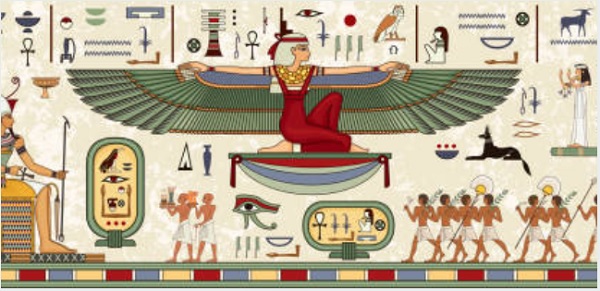
The exploration and study of the ancient world history reveals not only the origin and genealogy of kings and empires of the ancient civilizations, and their unique socio-religious and cultural traditions, but also reveal many inter se common features and attributes of other contemporary and contiguous or even remotely located civilizations. For instance, the ancient Mesopotamia broadly represented the land between the Tigris and Euphrates rivers in the southwestern Asia that boasts of multiple civilizations like Sumerian, Assyrian, Akkadian, and so on, but with also considerable common features and influence on Egyptian in North Africa, Indus Valley civilization in South Asia and the Mediterranean. In the previous part, we had briefly discussed Sumerian civilizational and cultural history of the Mesopotamic region and now here we shall explore such attributes of the ancient Egypt in North Africa.
Ancient Egypt was a civilization of ancient North Africa, largely located along the lower reaches of the legendary Nile River, and geographically corresponding to the modern Egypt now. In Africa, Nile is a major north-flowing river, which is also historically considered as the world’s longest river although later certain researches now suggest the South American Amazon river as the longest, if not by length then certainly the largest one in terms of the discharge volume of water. Traditionally, the civilizations have grown either along side the river beds or other perennial water sources/reservoirs and coastal regions since ancient times. Like majority other civilizations, the ancient Egypt too has a prehistoric past of the splinter nomadic groups that most probably coalesced around 3100 BC to form more organized society as per the conventional Egyptian chronology, which is also considered to be one of the most well-developed civilizations of the time with a series of kingdoms.
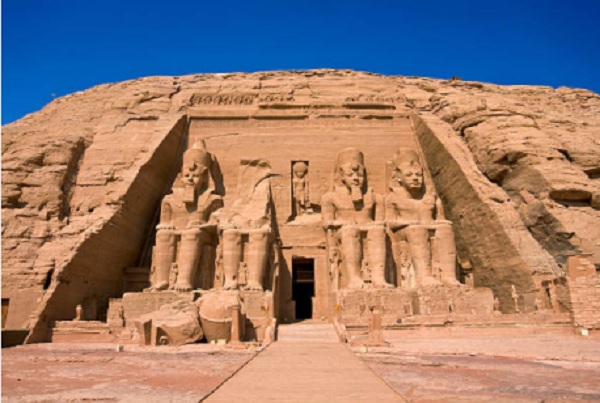
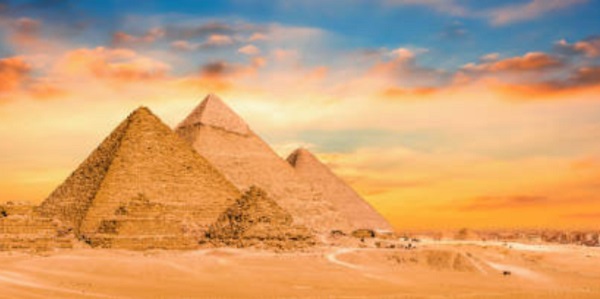
A Brief Civilizational History & Other Attributes
Ancient Egypt was a north African country on the Mediterranean Sea that boasts among the oldest civilizations of the world. The name Egypt appears to have been derived from the Greek word Aegyptos, which is the Greek pronunciation of the Egyptian term ‘Hwt-ka-Ptah’ i.e., House of the Spirit of Ptah, who is accredited among the earliest gods of the ancient Egypt. Among the early kingdoms, the Egyptian land was known as Kemet, which means Black land, so named due to rich and dark fertile soil in the large catchment areas of the river Nile, facilitating early settlements to grow. Much later, the country was known as” Misr” that simply means a country and this name is still in use by the native Egyptians in the modern age.
The prehistory of Egypt spans the period from the earliest human settlement to the beginning of the Early Dynastic Period around 3100 BC, starting with the first Pharaoh, Narmer. In the context of Egypt, the prehistoric and predynastic era is traditionally coterminous with the final phase of the Neolithic period beginning from 6000 BCE to ending in the Naqada III period around 3000 BCE. The term Pharaoh originally implied to the royal palace in ancient Egypt and later it came to be used metonymically for the Egyptian king under the Kingdoms starting around 1539 BCE to ending 730 BCE as an epithet of respect.

The Nile river has been the lifeline of this African region for much of human history as it’s fertile plains gave humans beings an opportunity to systematically evolve in a settled agrarian economy and grow as a sophisticated and centralized human civilization in history. The majority of Predynastic archaeological artefacts and vestiges/remains have been found in the Upper Egypt, for the simple dynamics of the silt of Nile river being heavily deposited around the Delta region, thereby burying most such sites much before the modern age. Also, there are sufficient reasons to believe that in the Predynastic and Early Dynastic periods, the climate was much less arid and large parts of Egypt were covered by savanna vegetation with rich density of the grazing ungulates/hoofed mammals.
By about 5500 BC, small Badarian and some other tribes had apparently settled in the Nile valley with fairly well-developed agriculture and animal husbandry, and also with characteristic pottery and items of personal use, such as combs, bracelets, and beads. This was followed by the Naqada people, including the Amratian (Naqada-I), the Gerzeh (Naqada-II) and Semainean (Naqada-III). The Naqada culture was an improvement over the earlier tribes as they were able to manufacture a diverse range of material goods too, suggesting the increasing power and wealth of the civilization. Such items included combs, small statuary, painted pottery, high quality decorative stone vases, cosmetic palettes, and even jewellery made of gold, lapis, and ivory. The Nagada people also developed a ceramic glaze known as faience used to decorate cups, amulets, and figurines as well as a full system of hieroglyphs for writing the ancient Egyptian language.
The Early Dynastic Period on Egypt that began around 3000 BCE, was nearly contemporary with the Sumerian-Akkadian civilisation in the Mesopotamia region. The power and wealth of the kings during this period could be fathomed by their elaborate mastaba tombs and mortuary cult structures at Abydos, which were used to glorify the deified king following his death. During the period, the King’s control over the land, labour and other resources was also increasingly legitimized. Under a series of dynasties, the Egyptian culture flourished and remained distinctively Egyptian in its religion, arts, language and customs. During the Old Kingdom period (2700–2200 BC), major advances in architecture, art and technology were made in addition to the increased agricultural activities with a well-developed and centralized administration. Ancient Egypt's several crowning achievements such as the Giza pyramids and Great Sphinx were constructed during the span of Old Kingdom.
However, during this period the populist measures increasingly taken by kings gradually led to the weakening of the central administration and rise in power and influence of regional governors. Consequently, around 2160 BCE rulers based in Hierakonpolis controlled Lower Egypt in the north and another rival clan based in Thebes took control of the Upper Egypt in the south. After over a century’s rivalry, the latter forces convincingly defeated the former, established the Middle Kingdom (2134–1690 BC), and brought in a period of economic and cultural renaissance. During this period, the Egyptian land remained largely stable and prosperous with resurgence of art, literature, and monumental building projects.
In the latter half of the Middle Kingdom, the power of the kings started diminishing and, consequently, a Western Asian tribe called the Hyksos invaded it and took over the most of Lower Egypt around 1650 BCE with their capital at Avaris. However, they were later driven out by the Upper Egyptian King Ahmose I, who then founded the Eighteenth Dynasty and shifted capital from Memphis to Thebes. Following this, the New Kingdom (1550–1070 BC) marked the rise of Egypt as global power that expanded during its greatest extension to an empire as far south as Tombos in Nubia, and included parts of the Levant in the east. This period is remarkable for unprecedented prosperity and some of the most famous Pharaohs in history, including Hatshepsut, Thutmose III, Akhenaten and his wife Nefertiti, Tutankhamun and Ramesses II.
During the period 1069–653 BCE, Egypt's glory and prestige again declined with the rising Assyrian influence, and in the later period two rival empires had many conflicts and wars and finally the Assyrians took control, occupied Memphis and sacked the temples of Thebes. Assyrians controlled Egypt through a series of vassals known as the Saite kings of the Twenty-Sixth Dynasty, who were able to get rid of Assyrians with the help of Greek mercenaries, whose influence gradually increased with the city-state of Naukratis passed under the control Greeks in the Nile Delta. In the sixth century BC, the Egypt was conquered by the Achaemenid Empire and thus it came under the Persian rule.
This flip-flop with Persia and their rule continued for long till 332 BC, when Alexander the Great easily conquered Egypt and was warmly received by the Egyptians as a deliverer. Alexander’s victory over Egypt led to the establishment of the Macedonian Ptolemaic Kingdom, which was based on an Egyptian model with new capital at Alexandria. The Ptolemaic Kingdom under Greek dominance continued for the next three centuries, the last ruler of which was Queen Cleopatra who was defeated by the Roman forces under Caesar Augustus in 30 BCE, who became next emperor of the Roman empire with Egypt made a province of the Roman empire.
Egypt remained under the Roman control from 30 BCE to 641 CE, during which the Romans heavily relied on it for grains shipments, and the region remined under strict control of the Roman army to quell rebellions, deal with bandit gangs and the collection of strictly enforced heavy taxes. Though Romans were more hostile towards natives compared to Greeks but certain Egyptian traditions such as mummification and worship of the traditional gods was continued. However, around the mid-first century CE, the Christianity took root in Egypt with the increase of evangelic practices. Gradually, it tightened nooks on the popular religious traditions of Egypt and people were forced to convert from Egyptian and Greco-Roman religion to Christianity. The Christian Emperor Theodosius introduced legislation banning the pagan rites and closed temples in 391 CE. Then Egypt was invaded and conquered by the Arab Islamic Empire by 642 CE. All these changes destroyed the traditional culture and religion of Egyptians.
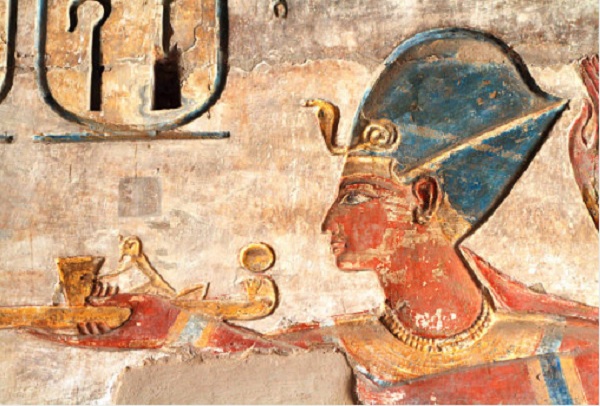
In ancient Egypt, the pharaoh was an absolute monarch with complete control over the land, military and vast resources of the country. The temples were not only the place of worship but also used for the collection and storage of the kingdom's granaries and treasuries. The ancient Egyptians used barter system and coinage comprised of copper and silver came much later. The society was stratified with farmers making majority population. The artists and craftsmen enjoyed little higher status than farmers, and scribes and officials constituted the uppermost elite class. Men and women were considered equal under law and women were given greater personal choices, legal rights, and opportunities so much so that Hatshepsut and Cleopatra VII even became pharaohs. The pharaoh was also supreme authority in legal system and enactment of laws. The punishment for minor crimes involved imposition of fines, beatings, facial mutilation, or exile, etc., depending on the severity of the offense but grave crimes like murder and tomb robbery were punishable to death by execution, carried out by decapitation, drowning, or impaling the criminal on a stake.
The rich fertile soil of Nile river produced abundant opportunities of farming and agricultural produce in the ancient Egypt. They cultivated emmer and barley, and other cereal grains, which constituted as staple diet of bread and beer. Flax plants were grown for their fibres used in weaving sheets of linen for clothing and Papyrus grown for making paper. Egyptians domesticated animals like cattle, sheep, goats and pigs for various uses; also, poultry comprised of ducks, geese and pigeons were captured and bred at farms, Besides, River Nile was a source of plenty fishes and bees were domesticated for the honey and wax. Rich natural resources like precious and building stones, copper and lead ores, gold, etc., were used by the ancient Egyptians to build monuments, statues, tools and fashion jewellery. The Egyptian language was a northern Afro-Asiatic language closely related to the Berber and Semitic languages. The architecture of ancient Egypt such as the Great Pyramids of Giza and the temples at Thebes fascinate the world even today. They believed in immortality after death and had an elaborate funerary system including the mummification of body.
Egyptian Religion and Gods
The ancient Egyptian people had firm belief in the gods, afterlife and divine rights of kings. Like other contemporary civilizations, the Egyptian pantheon too had many natural gods with supernatural powers. Also, the gods were not necessarily benevolent all the time; hence they were appeased by Egyptians with regular offerings and prayers. Further, the pantheon kept changing constantly with newer deities promoted in the hierarchy. Many cult temples were created for the respective gods, which were run by the priests acting on the king's behalf. Usually, the statue of the deity was installed at the centre of the temple which was only occasionally opened for the public. Masses were ordinarily expected to worship deities at their home. In the beginning, pharaoh served as the spiritual intermediary but in the later period the direct worship of the gods resumed.
According to Egyptian belief, human beings had both physical and spiritual components comprised of body, spirit and life-force. Besides, their conviction was that the heart is the centre of thoughts rather than the brain, and this was the reason why in the mummified body while all other internal organs were removed but the heart was preserved and kept. In their view, the spiritual component was set free to move at will after death but it still required physical remains such as preserved body, statue or figurine as a permanent abode. The pharaoh was considered to be supreme leader and authority when it comes to religion and associated rituals. Like mentioned earlier, the Egyptian deities represented various forces of nature and were usually a combination of human and animal forms. Although there were hundreds of gods and goddesses but the following ones were considered the most auspicious, important and revered deities in the ancient Egyptian society.
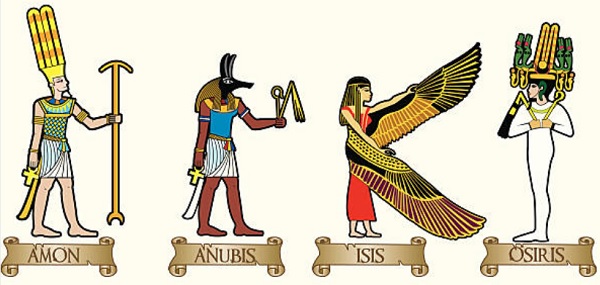
Amon (also Amun): Amon was considered as the principal deity and was revered as the king of the all gods and goddesses. He has been given the same status and importance by the modern scholars in the Egypt pantheon as was Zeus to ancient Greek people. In later period, he was amalgamated with the sun god and rechristened as Amun-Ra. People considered him as fatherly figure of the pharaoh along with his female consort Mut or Amunet. Amon was the god of air and depicted as a man wearing crown with two vertical plumes. His animalistic symbols were the ram and goose. He had risen to the position of tutelary deity of Thebes after the First Intermediate Period in the 11th Dynasty and as the patron of Thebes, he along with spouse Mut and Moon god Khonsu as son constituted the divine family designated as the "Theban Triad".
Amon is believed to have gained larger acceptance among Egyptians after Thebes rebellion against Hyksos during the reign of Ahmose I (16th century BCE) with victory credited to his blessings and this relevance and reverence continued generally through the New Kingdom with his status as transcendental, self-created and creator deity benevolent and pious to the poor or troubled people. In the old Egyptian literature, Amon along with Osiris is among the most illustrated Egyptian gods. As the main deity of Egypt, he even gained popularity and following outside Egypt too and a massive temple complex dedicated to Amun-Ra at Karnak in Egypt is among the most visited monumental place even today.
Mut (also Amunet): Mut means “mother” in Egyptian, she as the consort of Amon is among the primary deities as the mother goddess associated with the primordial waters of Nu (the primordial water abyss) from which everything in the world was created. She wears two crowns on her symbolic to the Upper and Lower Egypt, respectively, and is also represented as a vulture in hieroglyphs. She is variously depicted in art including as a woman with the wings of vulture bearing an ankh (key of life) and united crown of the Upper and Lower Egypt with bright red or blue dress with the feather of the Ma'at (truth, balance, order, harmony, law, morality and justice) at her feet. In some avatars, she is also shown as a cobra, cat, cow, lioness, or even vulture. She was among the most venerated deities by pharaohs and many temples dedicated to Mut are still found in the modern Egypt with a prominent one in Karnak.
Osiris: Osiris was among the more important deities only next to Amon and Mut in importance. He is popularly known as the god of underworld, the dead, resurrection and afterlife although, originally, he was god of agriculture and fertility and the cycle of River Nile floods. According to a mythical tale, Osiris was the king of Egypt who was murdered and cut into pieces by his rival brother Seth, but resurrected by wife Isis later to conceive a child Horus, and take charge of the underworld. Osiris is considered to be the eldest child of the earth god Zeb and sky goddess Nut, and was worshipped by Egyptians as they believed in life after death. He is depicted in many forms but more common being a pharaoh with a complexion of green or occasionally black in mummiform, wearing the trappings of mummification from the chest downward with face and hands exposed. As god of agriculture and fertility, he was symbolic to the renewal, growth and prosperity.
Isis: In the early Egyptian literature, neither much is documented about her origin nor she is linked to a specific deity unlike other gods. However, over a period of time, Isis grew in importance among the more important goddesses in Egyptian pantheon. As Isis is linked with the resurrection of Osiris to raise a son, she is traditionally venerated as a virtuous wife and mother goddess. As consort of the underworld god Osiris, she was also considered as the main deity associated with the rites of dead people. During the Greco-Roman period, she was identified with Greek goddess Aphrodite with cult spread over to other countries. The depiction of Isis with infant Horus is believed by many to have inspired the Christian imagery of Mary and infant Christ.
Ra (also Re): Ra, the Sun god of the ancient Egypt, too had great importance in Egyptian history. He was represented by a human body with the head of a hawk and a sun disk over his head. According to ancient Egyptian beliefs, he sailed through the sky in a boat every day and passed through the underworld every night; the events of the sunrise and sunset were seen as the renewal process. Several ancient Egyptian gods were merged in Ra and creation of many gods such as Ptah, Isis and Apep is linked to him. With the rise of New Kingdom, when the god Amun grew in prominence, Ra was amalgamated with him into Amun-Ra. He was believed to have created the world ruling its’ all parts including the sky, earth and underworld. As the giver of life and controller of the ripening of crops, he was a symbol of life, warmth and growth. Ra cult was centred in Heliopolis, which is a suburb of the modern Cairo now.
Horus: The god Horus was the son of Osiris and Isis and is often remembered as the god of vengeance. He was depicted as human with the falcon’s head or even simply as falcon. He represented the god of kingship and sky and was also associated with the war and hunting. His worship started towards the late prehistoric Egypt and continued until the Ptolemaic Kingdom and Egypt under Roman empire. According to the Egyptian mythology, he was magically conceived by his mother Isis after the death of Osiris and was raised to avenge his father’s murder. After avenging his father’s death, he arose as the new pharaoh of Egypt mythology. Several myths are associated with him: As sky god, he was said to contain the Sun and Moon with the former as his right eye and the latter as left, and that the Sun and Moon traversed the sky when Horus, a falcon, flew across it. Also, the “Eye of Horus” is an ancient Egyptian symbol of protection and royal power from the deities, seen on the images of Horus' mother Isis, and other associated deities.
Seth (also Set or Suetekh): He was the Egyptian god of war, chaos, storms and foreign lands; In Egyptian mythology, he is recorded as brother of Osiris, Isis and Nephthys, uncle of Horus, and consort of Nephthys. In some accounts, his other consort is also mentioned as the goddess Tawaret, a hippo-headed deity of fertility and childbirth. He is depicted as a rather complicated god with both negative and positive attributes and forms. In some places, he is depicted as human with a distinctive head while at other places shown as an enigmatic creature resembling with no other known animal but sort of a composite of an aardvark, donkey, jackal, or a fennec fox with curved snout, longish rectangular ears, and a canine body with forked tail. In some accounts, he is depicted as protector of Ra (sun god) by defeating the dark serpent Apep but usually he is the symbol of confusion, destruction and disorder.
Ptah: He was an ancient Egyptian deity as the god of craftsmen and architects. Ptah was the head of another triad of gods worshipped at Memphis; the other members being his spouse, the lion-headed goddess Sekhmet, and the son god Nefertem. Ptah was considered a creator god, who conceived the world by the thought of his heart and gave life through the magic of his Word. He bore many epithets suggesting his role in beauty, truth, justice, prayers, ceremonies, and so on, in the ancient Egypt. Hathor: The goddess
Hathor: embodied motherhood and fertility, and was believed to be a major benevolent goddess associated with the protection of women at the childbirth in ancient Egypt. Besides, she was also associated with the funerary aspects of the dead; sometimes addressed as the “Lady of the West” as tombs were usually laid on the west bank of the Nile river and she was supposed to welcome the dead into next life. She was often depicted as a cow, symbolizing her maternal and celestial aspect, although her common attire was that of a woman wearing a headdress of cow horns and a sun disk. At some places, she was also depicted as a lioness, cobra, or sycamore tree. She was considered to be an affectionate and kind goddess for both the living and dead people.
Anubis (also Inpu, Anpu): Anubis was the god of death, mummification, embalming, cemeteries, tombs, afterlife and underworld in the ancient Egyptian religion. In old Kingdom, until the arrival of Osiris and his rising to principal role as the god of the underworld, Anubis was considered as the principal god of the dead including the funerary practices and the care of the dead. He was usually depicted a man with a canine head (jackal or wolf) or even just a canine. Like other ancient Egyptian deities, Anubis is depicted in various roles such as the protector of graves, an embalmer and usherer of souls into afterlife. Later his role was largely taken over by Osiris during the Middle Kingdom.
Sekhmet: She was known as the warrior goddess of war and healing, and as per traditional Egyptian belief, she protected pharaohs in battles with enemies. Sekhmet was the daughter of Ra and is depicted as a woman with lion head and a solar disk or just as lioness itself due to her fierce avatar and character. She was said to breathe fire, likening it to the hot winds of the desert.
In ancient Egypt, gods and goddesses represented various natural forces and fundamental necessities required to sustain human life. The Egyptian pantheon had many cults and numerous gods, at times with the overlapping roles and interconnections. Also, the Egyptian gods were mortals like some other contemporary civilizations, and their relevance and importance increased or decreased with time in different kingdoms. Some other worth mentioning Egyptian deities are: Thoth, the god of knowledge and wisdom; Geb, the goddess of earth; and Bastet in a role similar to Sekhmet but in a milder form.
Egyptian Mythological Legends
Traditionally, the ancient Egyptian people wrote on papyrus as well as walls, tombs, pyramids, obelisks and so on. Some of the better-known works of the ancient Egypt are the Story of Sinuhe, the Westcar Papyrus, the Ebers papyrus and the famous Book of the Dead. Pyramid Texts too carry a lot of information. The ancient Egyptian literature generally falls under the category of "Wisdom literature" i.e., they are more of instructions rather than the entertainment, but a large number of myths, stories and biographies too exist since the ancient age. A few such mythical and real-life legendary tales are briefly illustrated as follows.
1, The Creation Myth
The Egyptian creation myth is recounted in many sacred hieroglyphic writings which were found on the pyramids, temples, tombs and sheets of papyrus, narrating how the earth was created out of chaos by the god Atom. He is one of the most important and frequently mentioned deities from the earliest times, including the Pyramid Texts, where he is depicted as both a creator and father to the king. In the primordial age, the world appeared as an infinite expanse of the dark and directionless waters (Nu or Nun) which was personified with four principles of invisibility, infinite expanse, lack of direction and darkness. As per the Heliopolitan creation myth, Atum was the first god, who created himself from the water abyss, sitting on a mound from the Nu (primordial waters) by an effort of will or by uttering his own name. In the Book of the Dead (an ancient Egyptian funerary text), the sun god Atum ascended from chaos-waters with the appearance of a snake, an animal renewing itself every morning.
Accordingly, as the Lord of the Heavens and Earth, he wore the Double Crown and carried the ankh (a symbol of life) and sceptre. The story goes that after creating self, he then created the god Shu, the god of air, and Tefnut, the goddess of moisture, by spitting them out of his mouth. Other parallel narratives suggest that this feat was achieved through masturbation or union with his own shadow. The two infant gods, out of sheer curiosity, went to explore the chaotic waters and were lost into the darkness. Then Atum dispatched a fiery messenger (the Eye of Ra) to find his offspring. On their recovery, the tears of joy that Atum shed were the first human beings on earth. According to this mythical legend, in the beginning the gods lived on earth and kingdoms were based on the principles of natural justice. After creation of life on earth, the gods shifted to reside in the sky world and pharaohs inherited the right to rule on earth.
2. Osiris & Isis: Love and Murder Saga
Osiris and Isis were two of the four children of the earth god Geb and sky goddess Nut. When they grew, Isis and Osiris were married and the latter being the eldest son ascended the throne. Both were happy in their union, generous and just, worked for the nourishment and welfare of their subjects with abundant food from the rich and fertile Egyptian soil and the River Nile. The two passionately loved each other and were popular among the subjects but the younger sibling, Set, was jealous to Osiris and hated him. So, in a sinister plan, Set trapped his body into in a coffin, and threw it into the swirling waters of the Nile.
Anxious Isis transformed herself into a dark bird to trace his beloved husband and after a prolong search found the coffin stuck up in a tree. She hid the coffin but Set again stole it, and this time he cut Osiris’s body into pieces and scattered it at various places in Egypt. Undeterred with this setback, Isis travelled around searching for the body pieces and finally recovered it after the years’ efforts. Then she joined all pieces together and applying her magical powers, she restored Osiris back to life. Notwithstanding this, the resurrected Osiris could not return to the land of the living and was made the lord of the underworld by the gods. However, the final act of love between Isis and Osiris led to her conceiving a child, who grew and lived as the falcon-headed god Horus and took revenge of the death of his father at opportune time.
3. Contending of Horus and Seth: A Divine Revenge
This mythical story arguably is from the Twentieth Dynasty of Egypt recorded in Chester Beatty Papyri, which was a group of early papyrus manuscripts of biblical texts as also recorded in the Pyramid Texts. The story continues from the Osiris and Isis love and murder saga. After Osiris died, Set became the ruler and other sibling Nepthys became his wife, who, however, felt sorry for sister Isis and remained sympathetic to her tragedy. When the falcon-headed god Horus grew to become adult, he challenged Seth (Set) with his mother Isis’s backing to avenge his father’s death and take back the throne. Horus made a case before the court of gods about his rightful case to the throne which Set refused to concede. The subsequent contending has different versions including violent clashes and contests before the Enread, an assembled group of the Egyptian gods to decide the kingship. This ensued a series of contests and battle in which Isis sided with her son, Set didn't play fair many times but finally Horus was declared victor and rightful choice for the throne.
There are many versions of the tale of their battle and contest, in which Horus is repeatedly shown to excel but the gods remain undecided due to their own leanings towards one or the other contender. These contendings even include Set’s homosexual abuse of Horus, harpooning of Set by Isis but later taking pity in sparing his life and thereby enraging Horus, sexual and violent encounter leading to the removal of Horus’s one eye, and so on. Eventually, the final round of a boat race was organized in which it was decided to have boats made of stone. Horus played little trick and made a boat of wood instead plastered with limestone. When the race began, Set’s boat sank that enraged him and he transformed self into a Hippopotamus and attacked Horus. The latter, however, fought valiantly and was about to kill Set when the gods stopped the contest. The assembly of gods decided to seek the opinion of Osiris, now the underworld god, who opined Horus as the rightful successor of the throne as Set indulged in killing to become king while Horus didn’t kill anybody. Finally, the assembly of gods agreed and Horus was declared rightful choice for the throne.
4. Cleopatra of The Ptolemaic dynasty
Cleopatra VII Philopator (69 BCE – 30 BCE) was the last empress of the Ptolemaic Kingdom of Egypt, after which the country was annexed into the Roman Empire. This kingdom was established by Ptolemy, who was a general under Alexander the Great during his conquest of Egypt in 332 BCE. Queen Cleopatra is a legendary figure and world-famous personality for her education, eloquence in many languages, shrewdness, exotic beauty and power of seduction as also a dominant ruler of the time. She is also known for her diplomatic and romantic liaisons with Roman warriors Julius Caesar and Mark Antony. These qualities have undoubtedly earned her a remarkable place in the history as a much talked about legendary figure.
Queen Cleopatra was the daughter of Ptolemy XII Auletes, who inherited throne along with her minor brother at the age of 18 following the apparent natural death of her father. Soon after her ascension to the throne, opponents of her legacy conspired against Cleopatra, and she was compelled to flee Egypt to take shelter in Syria, where she raised an army of mercenaries and returned the following year to claim back her rightful place waging war on adversaries, and also sought Roman Julius Caesar’s assistance, who too needed funding support for his own ambitions in Rome. In the ensuing battle, the rivals were defeated and Cleopatra regained her throne with the help of Caesar, who stayed with her in Egypt for some time and she gave birth to a child believed to be borne out of their love relationship.
Around 46-45 BCE, Cleopatra visited Rome and stayed with Caesar and their child. However, Caesar was soon murdered and Cleopatra returned back to Egypt; she also started closely identifying herself with goddess Isis. In a short period, she secured and stabilized her position as ruler of Egypt with her minor son as co-regent. In the meantime, a battle was raged in Rome between Caesar’s loyalists Mark Antony Inc. and his assassins, Brutus and Cassius; though apparently both warring groups sought her assistance but she favoured the former group. Subsequently, she had another relationship with the winner Mark Antony and they together had twin children around 40 BCE. However, the power struggle and conspiracies continued in Rome and Egypt with Cleopatra, Mark Antony and Octavian in the centre stage for nearly a decade. Finally, Octavian’s forces convincingly defeated Antony and Cleopatra in late 31 BCE and Cleopatra ended her life by poisoning to avoid her public humiliation by the former.
Epilogue
The ancient Egyptian civilization appears among one of the most developed and prosperous civilization in the world for its rich culture, education, society, agriculture, sculpture and technology. The River Nile was a boon for the human settlements, agricultural land and other living needs. The prosperity of Egypt can be fathomed from the historical facts of the Greeks and Romans rulers and generals constantly seeking economic assistance from Egyptian rulers in the period following Alexander’s time. Some of the best examples of the sculptural art and technology of the ancient Egypt are Pyramids and Sphinx of Giza. Perhaps the rich culture and prosperity of the Egyptian people remained their strength and cause of vulnerability too in terms of constant invasions from Persian, Greek and Roman empires. It’s a pity again that a glorious civilization with so rich culture and traditions was systematically destroyed by selfish and power-hungry warlords of the time and through subsequent onslaught of the more recently evolved two Abrahamic religions.
Images (c) istock.com
30-Jan-2021
More by : Dr. Jaipal Singh